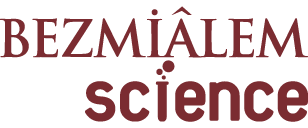ABSTRACT
An acute respiratory disease caused by a new coronavirus (Severe acute respirotary syndrome-coronavirüs-2, previously known as 2019-nCoV), coronavirus disease 2019 (COVID-19), appeared in December 2019 and then has spread rapidly throughout the world starting from China, Japan and South Korea. As of January 30, 2020, the World Health Organization has officially declared the COVID-19 outbreak. Considering the clinical symptoms of COVID-19, it has many symptoms such as high fever, cough, and fatigue. It is reported that this disease is very severe and causes serious consequences such as cytokine storm and acute respiratory distress syndrome in the elderly and those with chronic diseases. Currently, scientists are trying to find a specific antiviral treatment strategy. Various medications such as hydroxychloroquine, lopinavir/ ritonavir, ribavirin, remdesivir and favipiravir are currently being applied in clinical trials to test their efficacy and safety worldwide in COVID-19 treatment, and some promising results have been achieved so far. In this review, agents with potential efficacy against COVID-19 are presented in summary.
Introduction
The Severe acute respirotary syndrome-coronavirus-2 virus (formerly 2019-nCoV) appeared in Wuhan, Hubei province of China in December 2019, and then spread very rapidly across the world, starting from China, Japan and South Korea. To date, more than 3 million cases and more than 200 thousand deaths have been reported worldwide (1). The first COVID-19 case was confirmed in Turkey on March 10, 2020 and a total of 107,773 cases were approved as of April 25th 2020, and it was reported that a total of 2,706 patients died (2). Considering the lack of effective antiviral therapy against COVID-19, current treatments are predominantly for symptoms (3). That is why, scientists have recently intensified their work rapidly on drug therapy for COVID-19 treatment. We can use some treatment strategies against coronaviruses based on the experience of struggling in SARS-CoV and Middle East Respiratory Syndrome corona virus (MERS-CoV) outbreaks (4). Some agents have been quickly tested in clinical trials and have been reported to show activity against COVID-19 (5). The summary of current adult and pediatric patient medication guideline published by the Republic of Turkey Ministry of Health dated April 14, 2020 is shown in Table 1 (6,7). In the most current version of the guideline, the use of antimicrobials such as hydroxychloroquine lopinavir/ritonavir, azithromycin and favipiravir is recommended for the treatment of COVID-19 (Table 2).
Hydroxychloroquine is an antimalarial widely used in malaria, which was discovered to be a potential broad-spectrum antiviral in 2006 (8,9). Although the mechanism of action of hydroxychloroquine is not fully understood, it appears to block viral entry into cells by inhibiting the glycosylation of host receptors, proteolytic processing and endosomal acidification. This drug has also been shown to suppress cytokine production, such as interleukin (IL)-6 and tumor necrosis factor-a, and has immunomodulatory effects in host cells through the inhibition of lysosomal activity and autophagy (10,11). Chloroquine has the ability to inhibit replication cycles against human immunodeficiency virus (HIV) and other inflammation-related viruses (12).
Hydroxychloroquine has blocked SARS-CoV-2 infection at a low micromolar concentration with a semi-maximum effective concentration (EC50) of 1.13 mM and a semi-cytotoxic concentration (CC50) greater than 100 mM (13). Currently, there are some randomized clinical trials that examine their role in COVID-19 therapy (14). Chloroquine is known to inhibit pH dependent steps of replication of various viruses (11). Hydroxychloroquine studies are planned for post-exposure prophylaxis after chloroquine prophylaxis (NCT04303507) and high-risk exposures (NCT04308668) in healthcare professionals (15). Although the antiviral properties of chloroquine treat people with the disease, it should be remembered that this will change depending on the disease, chloroquine concentration and duration of treatment (16). Chloroquine is still the first drug that comes to mind because it leads to rapid fever reduction and an immediate improvement in lung computed tomography findings, and at least 10 clinical studies are currently being performed (17).
Scientists have used protease inhibitors of lopinavir and ritonavir along with other drugs to treat HIV-1-infected adults and children over the age of 14 years (18) and HIV-infected people (19). Chu et al. (20) have confirmed in in vitro and clinical studies that lopinavir/ritonavir has anti-SARS-CoV activity and Arabi et al. (21) have confirmed that they have anti-MERS-CoV activity. They also have demonstrated that they can cure patients.
Early reports of lopinavir/ritonavir for the treatment of COVID-19 are mostly case reports and small-scale retrospective, non-randomized cohort studies, which makes it difficult to detect the direct treatment effect of lopinavir/ritonavir. More recently, Cao et al. (22) have reported open-label randomized clinical trial results comparing the efficacy of lopinavir/ritonavir with standard care in 199 patients with COVID-19. A study conducted in South Korea reported that the viral load of a COVID-19 positive patient decreased with lopinavir/ritonavir treatment (23).
Favipiravir is currently one of the drugs that have undergone clinical trials for the treatment of COVID-19. Favipiravir is a new RNA-dependent RNA polymerase inhibitor. Favipiravir is converted into an active phosphoribosyl form (favipiravir-RTP) in cells and is recognized by the viral RNA polymerase as a substrate, thereby inhibits RNA polymerase activity (24). Therefore, favipiravir is thought to have a potential antiviral effect on SARS-CoV-2, which is an RNA virus. There are a limited number of clinical trials that support the use of favipiravir for COVID-19. In a prospective, randomized, multicenter study, favipiravir (n=120) was compared with Arbidol (n=120) for the treatment of moderate and severe COVID-19 infections. On the 7th day, clinical improvement differences were observed in patients with moderate infection (71.4% favipiravir and 55.9% arbidol, p=0.019). No significant difference was observed in the severe or severe and moderate (combined) arms (25). In another study conducted in China, considering the first results of a total of 80 patients (including the experimental group and the control group), favipiravir was shown to have a stronger antiviral effect than lopinavir/ritonavirin (26).
Azithromycin is an antibiotic from the macrolide group with a wide range of uses, especially for the treatment of gram-positive cocci. Azithromycin has been shown to be active in vitro against Zika and Ebola viruses and to prevent severe respiratory infections when administered to patients who have had a viral infection (27-29). Another study reported that the combination of azithromycin-hydroxychloroquine (6/6, 100%) in 6 COVID-19 patients resulted in numerically superior viral clearance compared to hydroxychloroquine monotherapy (8/14, 57%) (30).
In addition to the medicines in the above guidelines, a few more medicines attract attention. Of these, remdesivir, which was developed for Ebola, is an antiviral drug with a nucleoside analog and broad-spectrum anti-RNA (31) and shows broad-spectrum antiviral activity against several RNA viruses. Animal experiments (32) have shown that remdesivir can effectively reduce viral load in lung tissue of MERS-CoV-2-infected mice, improve lung function, and alleviate pathological damage in lung tissue. Based on data collected in the in vitro mouse cell culture model, remdesivir has been found to affect NSP12 polymerase in coronaviruses (23). Wang et al. (13) found that remdesivir strongly prevents SARS-CoV-2 infection at low micromolar concentrations and has a high selectivity index. Holshue et al. (31) reported that remdesivir gave promising results in the treatment of a patient with COVID-19 in the USA. The combination of remdesivir and chloroquine has been proven to effectively inhibit the recently occurring SARS-CoV-2 as in vitro. Currently, randomized, placebo-controlled, double-blind phase III studies are being conducted on 761 patients in many hospitals in Wuhan, the first place of outbreak. The results of the trials are expected to be announced in the next few weeks (33). An in vitro activity of oseltamivir, another neuraminidase inhibitor, which is normally approved for influenza treatment, has not been documented against SARS-CoV-2. In China, the COVID-19 outbreak initially occurred during the peak influenza season, so a large number of patients underwent empirical oseltamivir therapy, not as a therapeutic intervention, until SARS-CoV-2 was discovered (34). In current guidelines, it is added to the treatment in viral pneumonia seen with COVID-19 (35). Ribavirin is also one of the new drugs added to the guidelines. It is a broad spectrum nucleoside analogue with antiviral effects. One study compared 111 patients with severe acute respiratory syndrome (SARS) treated with ribavirin and 41 SARS patients treated in combination with lopinavir/ritonavir and ribavirin; Acute respiratory distress syndrome (ARDS) and mortality risk were found to be lower in patients treated with combined therapy (20). However, ribavirin was found to have limited in vitro activity against SARS-CoV and was shown to require high concentrations to inhibit viral replication, which led to high dose and combination therapy (36). It is thought to have limited use for COVID-19 treatment due to its efficacy data and toxicity without ribavirin for other nCoV types (5). These drugs require more clinical evidence before they are recommended. Other drugs recommended for treatment are arbidol (an antiviral drug available in Russia and China), intravenous immunoglobulin, interferons, and plasma of patients recovered from COVID-19 (37-39). Among the candidate drugs to treat COVID-19, repositioning old drugs for use as antiviral therapy is an interesting strategy because information on safety profile, side effects, posology, and drug interactions is well known (40).
Discussion
For COVID-19, which started in December 2019 and spread all over the world, scientists have made great progress in the characterization of the virus, and vaccine-drug research that can actively be effective in combating COVID-19 has also accelerated. There is currently no proven antiviral specific for COVID-19. Other drugs recommended for treatment are arbidol (an antiviral drug available in Russia and China), intravenous immunoglobulin, interferons, and plasma of patients recovered from COVID-19 (37-39). Among the candidate drugs to treat COVID-19, repositioning old drugs for use as antiviral therapy is an interesting strategy because information on safety profile, side effects, posology, and drug interactions is well known (40). This indicates that although a pandemic is present, it is necessary to continue the work against the same pandemic with increasing difficulties. At present, more data are needed to further demonstrate the effectiveness of antiviral treatments against the virus. In addition, studies are needed to investigate the transmission and pathogenicity mechanisms that need to be revealed. The most important issue is to reveal the molecular mechanism of viral entry and viral replication for targeted vaccine-drug studies.



